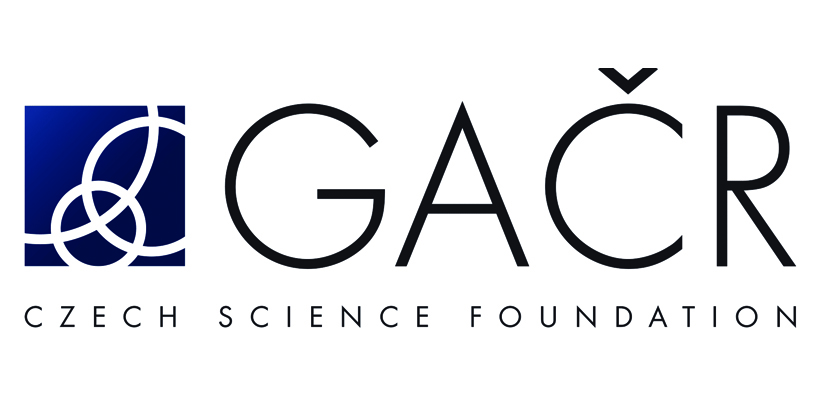On-going

ENFORCE: Nanoscale-to-Atomic Engineering of Acid Site for Selective Heterogeneous Catalysis
Advances in catalysis towards new materials and energy production have fueled the development of modern society, particularly thanks to zeolites, microporous solid acids with versatile chemical composition. Key achievements in the chemical industry have emerged from design of zeolite catalysts at the bulk level. Our recent works on chemoselective manipulating zeolite frameworks have challenged a conventional thinking about rational design of materials at the nanoscale level. However, currently available synthetic approaches still lag behind far more sophisticated characterization and computational methods capable of distinguishing active sites in zeolites at atomic level and showing that available materials possess medley of acid centers exhibiting different selectivities in targeted catalytic process. This project aims to establish a synthesis method for selective engineering key features of zeolite acid sites affecting the catalytic chemistry of interest and to provide a rational strategy for the predictive design of acid heterogeneous catalysts. In targeted materials, all acid sites will have exactly the same nature and structure and will consequently perform at the same rate in catalysis, thereby enabling more predictable catalytic processes.
Goal: Implementation of the frontier research project belonging to the field of Physical chemistry, ENforCE, which was included to the category “A” in the second step of 2-step peer review evaluation by the expert panel PE5 of European Research Council but did not receive a support from European funds.
Principal investigator: M. Shamzhy, Ph.D.
Grantor: Ministry of Education, Youth and Sports
Duration: 2021-09-01 to 2026-08-31
Grant number: LL2104
Funding amount: 1 489 050 EUR

HYPPER: Hybrid protonic reactor for flexible energy conversion, storage and transmission by reversible organic electrolysis
The increasing availability and affordability of renewable electricity are enabling the decarbonisation of many industrial sectors. A key tool is electricity storage, especially providing high-capacity, long-term storage and transportability. However, currently-proposed energy-storage technologies are either based on energy-inefficient multistage processing or require electrified units at temperatures not compatible with catalytic steps.
Goal: hyPPER vision is to combine process intensification and innovative molecular catalysis to bring out ground-breaking efficient, load-flexible and scalable reactor technology that intimately integrates LOHC-based storage and proton-ceramic steam-electrolysis/fuel-cell. hyPPER will develop a compact reactor cell integrating a hybrid layered membrane and selective electrodes. Through the first-principles engineering of a proton-conducting electrolyte heterojunction, both ionic transport and electrocatalysis at LOHC-cycle operation conditions (250-400°C) will be enhanced. As a result, this compact technology will boost atomic and round-trip efficiency in energy storage potentially reaching >75% , thus cutting associated GHG emissions. Integration of the hyPPER concept in existing and emerging RE-plants and use cases will contribute to expanding the business portfolio and strengthen the sustainability and economic base of the energy sector. Up-scale viability will be analysed by considering techno- economic, regulatory, societal and sustainability criteria. Upon fabrication of the cell applying advanced thin-film methods and catalyst integration, hyPPER will validate this technology (TRL-4) in the reversible electrochemically-driven LOHC charge/discharge.
Consortium: The consortium comprises seven partners from Spain, Norway, and the Czech Republic. Its counts on academic partners with the highest worldwide excellence in electroceramics, catalysis and nanofabrication of energy devices, together with leading industrial partners with exceptional expertise in sustainability and medium-temperature electrochemical cells.
Principal investigator in Charles university: M. Opanasenko, Ph.D.
Funding source: Horizon Europe
Duration: 2025-01-01 to 2028-12-31
Grant number: 101192918
Funding amount: 241 000 EUR

Extra-large pore zeolite catalysts for valorisation of biorenewable chemicals
In the last 50 years, the development of zeolite-based catalysts has been one of the most impressive breakthroughs in the heterogeneous catalysis realm. Literature on the use of zeolites in petrochemical and refining industries is vast and many synthesis–property–function relations have been established. Nevertheless, this progress hasn’t been mirrored in the field of biorefining and tailor-made zeolite design remains at its infancy in this research area which is mostly contributed to the fact that biomass (components) and derived intermediates inherently possess bulky structures and consequently well-known conventional zeolites present challenges due to their limited pore sizes, which cause diffusion problems and subsequently resulted in low conversion and product selectivity.
Goal: This Project aims at development of a new generation of zeolite catalysts for valorisation of biorenewable compounds based on extra-large pore zeolites to addresses the diffusional challenges associated with biomass valorisation reactions and steer reactions towards desired products through the variation of the nature of acid sites.
Principal investigator: MSc. Talat Zakeri / M. Opanasenko, Ph.D.
Funding source: Grant Agency of Charles University
Duration: 2024-01-01 to 2026-12-31
Grant number: 185224
Funding amount: 29 700 EUR

How does Lewis acidity of Sn- and Zr- zeolites influence their catalytic performance in upgrading of biomass-derived compounds?
Sn- and Zr-substituted zeolites are Lewis acids, which attracted attention due to their activity in different reactions considered for the valorization of biomass-derived compounds, such as glucose isomerization to fructose, Meerwein-Ponndorf-Verley (MPV) reduction of carbonyl compounds to alcohols, and aldol condensationns, to mention the most important processes. Often, these reactions are sensitive to the type of acid sites in such zeolites. At least two distinct types of acid sites have been identified in Sn- and Zr-zeolites. In “closed” sites, the metal is coordinated to the zeolite framework through four siloxane groups, while in “open” sites, one of these groups is replaced by a hydroxyl group. Although the type and amount of these acid sites play an important role in the reactions, currently known methods for identifying and quantifying the Lewis acid Zr/Sn sites are still limited.
Goal: This Project aims to address the property-performance relationships in Lewis acid zeolites considered promising for upgrading biomass-derived compounds by establishing the robust method for identification and quantification Sn- and Zr-associated Lewis acid sites. In particular, the project will explore new probe molecules for identification and quantification Sn- and Zr- acid sites in zeolites via in situ FTIR spectroscopy, clarify the Beer’s law for the emerging Lewis acid zeolites, while elucidating the role of Lewis acidity on the catalytic performance.
Principal investigator: MSc. Yuqi Zhang / M. Shamzhy, Ph.D.
Funding source: Grant Agency of Charles University
Duration: 2025-01-01 to 2027-12-31
Grant number: 402225
Funding amount: 31 400 EUR
Completed

Advanced characterization of active sites in novel zeolite-based catalysts
Advances in material design for industrial catalysis have enabled the synthesis of nanolayered zeolites with highly developed external surfaces and isoreticular zeolites with continuously tuneable pore size. However, our poor knowledge of the features of acid sites located in (i) micropores of different sizes and (ii) micropores vs. “external” surface of zeolites limits the development of tailor-made catalysts.
Goal: The Project aimed at in-depth characterization of the structure, intrinsic and apparent acidity, location and spatial proximity of acid sites in nanolayered and isoreticular zeolites using a combination of FTIR and NMR spectroscopies and computation methods.
Principal investigator: M. Shamzhy, Ph.D.
Funding source: Czech Science Foundation
Duration: 2020-01-01 to 2022-12-31
Grant number: GA20-12099S
Funding amount: 285 000 EUR

Overcoming application limitations of new zeolite nanomaterials by post-synthesis of germanosilicates
A number of new extra-large pore zeolites being of high interest for oil industry and synthesis of specialty chemicals were prepared as germanosilicates. Moreover, germanosilicate zeolites were recently discovered as perfect precursors for rational design of novel nanoporous materials via ADOR approach. However, high cost of Ge significantly limits the practical use of both Ge-containing zeolites and their ADORable derivatives.
Goal: The Project aimed at improving operational characteristics (e.g. stability, cost) and physico-chemical properties (e.g. chemical composition, the nature and concentration of acid sites) of extra-large pore germanosilicate and ADORable zeolites coupled with recycling of Ge
Principal investigator: MSc. Jin Zhang / M. Shamzhy, Ph.D.
Funding source: Grant Agency of Charles University
Duration: 2019-01-01 to 2021-12-31
Grant number: 1398119
Funding amount: 32 000 EUR

Seeded Growth of Isomorphously Substituted Chabazites for Separation of Propylene/Propane
The efficient separation of light hydrocarbons, such as propane and propylene, is a critical challenge in the petrochemical industry due to their similar molecular sizes and boiling points. Conventional separation methods, like cryogenic distillation, are highly energy-intensive, highlighting the urgent need for more selective and energy-efficient alternatives. Zeolite-based adsorbents with tailored frameworks offer a promising route toward achieving this goal through molecular-level discrimination.
Goal: This project focuses on the synthesis and optimization of small-pore zeolites with CHA topology for potential application in the separation of small hydrocarbon molecules. Specifically, the study targets isomorphously substituted CHA zeolites to enhance the selectivity of hydrocarbon separation via π-complexation interactions between the hydrocarbon molecules and the zeolite framework.
Principal investigator: MSc. Qiudi Yue / M. Opanasenko, Ph.D.
Funding source: Grant Agency of Charles University
Duration: 2019-01-01 to 2021-12-31
Grant number: 40119
Funding amount: 34 000 EUR

Soluble Zeolites
Catalytic processes are generally classified into two main types: homogeneous and heterogeneous. Homogeneous catalysts offer key advantages, such as enhanced activity and selectivity. However, heterogeneous catalysts are typically favored in industrial applications due to their inherent benefits in terms of operational simplicity and ease of separation. As a result, significant research efforts have been focused either on incremental improvements to existing heterogeneous materials or on transforming homogeneous catalysts into heterogeneous ones by using supports or other techniques.
Goal: The project took a fundamentally different approach to catalyst design. Instead of modifying existing systems, it was developing quasi-heterogeneous catalytically active materials that mimic the behavior of homogeneous systems. The goal was to combine the operational and recycling advantages of heterogeneous catalysts with the high accessibility of catalytic sites typical of homogeneous systems using nanoscale analogues of conventional heterogeneous catalysts as building blocks.
Principal investigator: M. Opanasenko, Ph.D.
Funding source: Grant Agency of Charles University
Duration: 2018-01-01 to 2020-12-31
Grant number: PRIMUS/17/SCI/22
Funding amount: 240 000 EUR